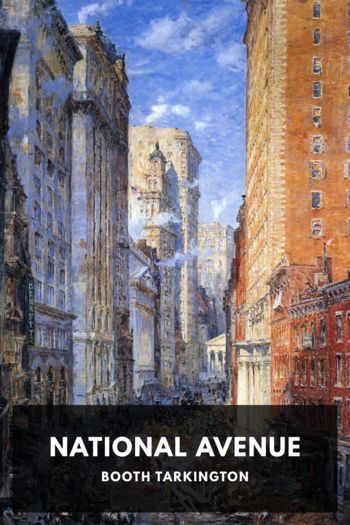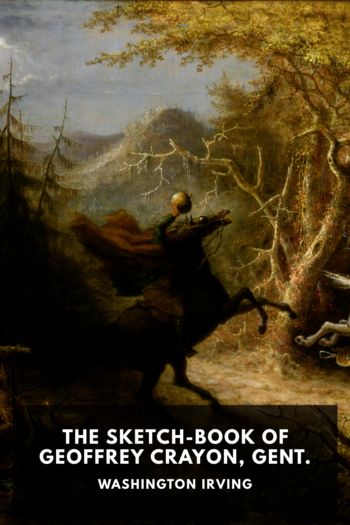Enchanted Evenings:The Broadway Musical from 'Show Boat' to Sondheim and Lloyd Webber by Block, Geoffrey (good story books to read .TXT) 📕

Read free book «Enchanted Evenings:The Broadway Musical from 'Show Boat' to Sondheim and Lloyd Webber by Block, Geoffrey (good story books to read .TXT) 📕» - read online or download for free at americanlibrarybooks.com
Read book online «Enchanted Evenings:The Broadway Musical from 'Show Boat' to Sondheim and Lloyd Webber by Block, Geoffrey (good story books to read .TXT) 📕». Author - Block, Geoffrey
• On Your Toes: Broadway revival directed by George Abbott (1983)
• Pal Joey: New York City Center’s Encores! Great American Musicals in Concert (1995); Broadway run at Studio 54, with a rewritten book and added songs from other Rodgers and Hart shows (2008)
• Lady in the Dark: New York City Center’s Encores! (1994); London premiere (1997) followed by major performances in Japan and Philadelphia
• One Touch of Venus: Goodspeed Opera House (1987); New York City Center’s Encores! (1995); three productions mounted by Discovering Lost Musicals Charitable Trust (1992–2000); BBC broadcast (1995); London premiere at The King’s Head Theatre in 2001 (a production that failed to go beyond the workshop stage for a New York performance two weeks after September 11); Opera North in Leeds (2004); 42nd Street Moon staging in San Francisco (2007)
• Kiss Me, Kate: Broadway revival directed by Michael Blakemore (881 performances) (1999–2003); London revival (2001); Italian version in Bologna (2007)
• Carousel: Directed for London and Broadway by Nicholas Hytner (1994); London revival (2008)
• Guys and Dolls: Long-running Broadway revival (1,143 performances) starring Nathan Lane, not coincidentally named for its star comic Nathan Detroit (1992–94); long-running London revival (2005–07); Broadway revival (2009)
• The Most Happy Fella: Broadway revival (1992); New York City Opera (2006)
• My Fair Lady: Broadway revival (1981); Broadway revival (1993); London revival (2001)
• West Side Story: Broadway revival (1980); London revival (1998); Hong Kong production (with lyrics in Cantonese) (2000); Bregenz Festival, Austria (in German) (2003 and 2004); London revival (2008); Montreal revival (in French) (2008); Philippine production (2008); Broadway revival directed by Arthur Laurents which includes significant dialogue and singing in Spanish (2009)
Today the American musical also thrives as a burgeoning subdiscipline in musicology and a significant topic of study across disciplinary boundaries. This is a relatively new phenomenon. When I embarked on Enchanted Evenings in the early 1990s, historical musicology had not yet found the Broadway musical a fertile grazing land. Musical theater historians Gerald Bordman (in a series of Oxford volumes), and the conductor and influential musical theater workshop director Lehman Engel wrote knowledgeably and engagingly about musicals, although neither seriously engaged their musical component.2 In The American Musical Theater, first published in 1967, Engel also offered a paradigm of “workable principles” that reveal what made certain shows “models of excellence.”3 In Engel’s view, nearly all great musicals were a product of a “Golden Age” that started with Pal Joey (1940) and ended with Fiddler on the Roof (1964). For the 1975 second edition, Engel found two worthy Sondheim shows to add to the list, Company (1970) and A Little Night Music (1973). Although Cabaret (1966) did not make the cut, Engel singled out this work for distinction as his sole “strong runner-up to the list of ‘best’ shows.”4
The booming cultural canon wars of the 1990s brought about the breakdown of classical canons in literature and the arts. It also led to the formation of new ones, albeit under various pseudonyms and disguises. Despite the increasing postmodern discontent among scholars and even some musical-theater lovers with the idea of a prescribed list of canonic “masterpieces,” Broadway surveys, including scholarly ones such as Joseph P. Swain’s The Broadway Musical: A Critical and Musical Survey (Oxford, 1990), generally followed Engel and without apparent collusion favored the same small group of shows.5 Whatever its intentions, the overlapping between one list and another gave the appearance that a Broadway canon had emerged, despite protestations to the contrary and however unwelcome. Enchanted Evenings focused on a representative few of the usual canonic suspects, starting with Show Boat (outside Engel’s list but the starting point for many others) and ending with West Side Story. As an epilogue, I added one post–West Side Story chapter, a survey of Sondheim that touched on Follies and Sunday in the Park with George.
New Broadway Scholarship
Aside from correcting some errors—such as the perpetuation of the unfounded rumor that Carousel’s “A Real Nice Clambake” was derived from an unused Oklahoma! song “A Real Nice Hayride”—and other minor updating and clarifications, I have left chapters 1–12 of the first edition largely unchanged. Were I writing these chapters for the first time, no doubt I would do some things differently. For example, the controversy over the two Kurt Weills, the German Weill versus the American Weill, of pressing concern in the early 1990s and a division partially reconciled in the first edition, is now a nonissue. Just as Germany gradually became unified in the 1990s, so did Weill. On the other hand, the notion of the “integrated” musical has become so questionable and contentious that the new protocol is to problematize the term or at least to place it in quotation marks (what Richard Taruskin calls scare quotes) to mark the increasing discomfort with the term. Since I did already problematize the idea of the integrated musical to some extent in the first edition and since I later addressed the issue in a separate essay, I decided not to dig up these bones of contention further.6 By letting these now wide-awake dogs lie in the first edition chapters, I am acknowledging that in these instances musical theater historians, like the musicals they study, reflect their own time in their efforts to serve our understanding of the past.
In the two new chapters on film adaptation (chapters 8 and 14) and the Epilogue chapters (chapter 15 and 16), however, I have called attention to some of the exciting new scholarship that has appeared since the mid-1990s. In the Epilogue, for example, I revisit the notion of the integrated musical as it evolves into what has become known as the concept musical (another controversial notion also commonly placed in quotation marks) and the still-more problematic, but less discussed, “totally integrated” approach common to the megamusical. Since the quality and quantity of bibliographic, scholarly,





Comments (0)